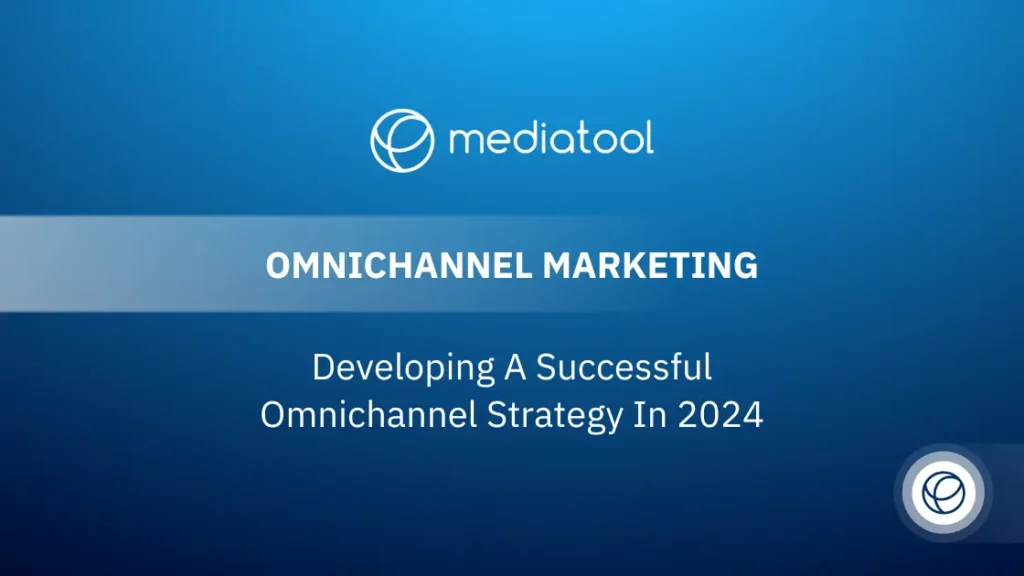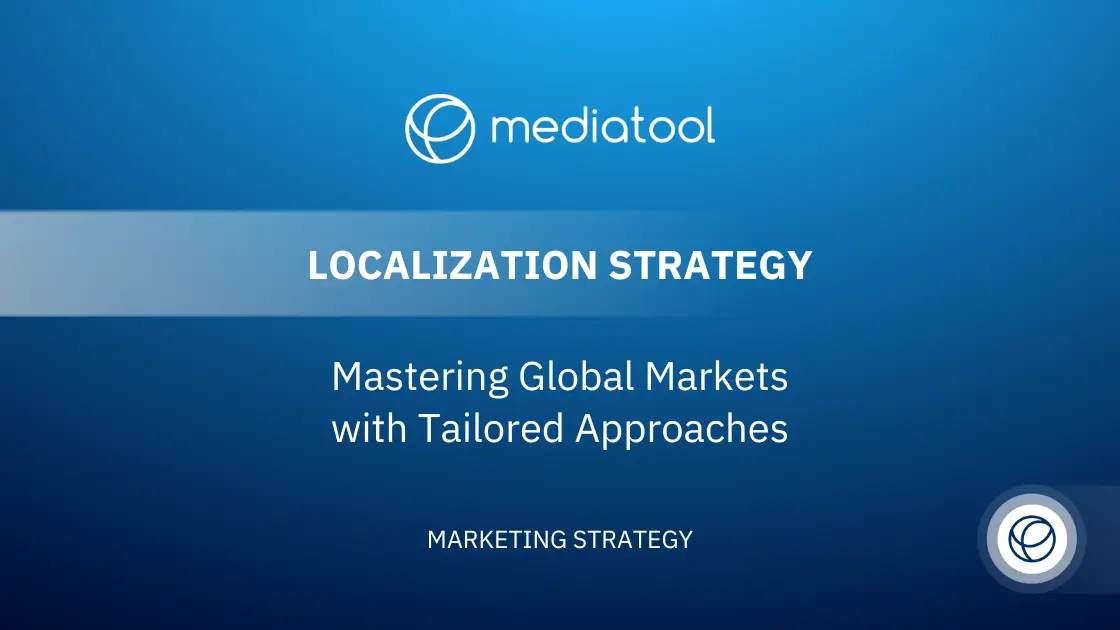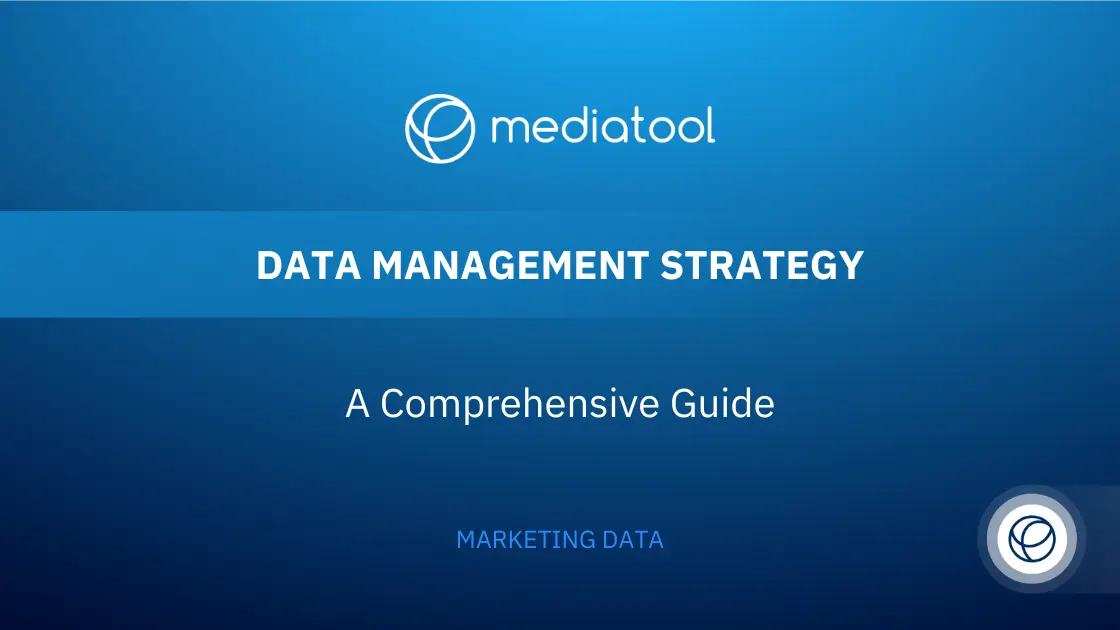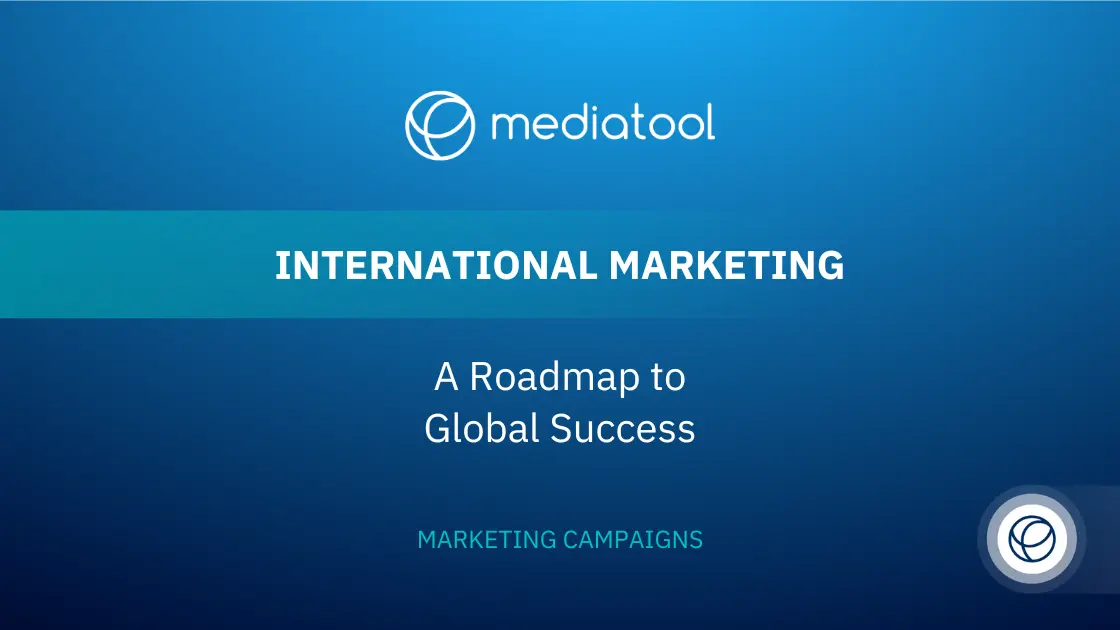To catch the attention of your audience these days, it’s important to have a presence on the platforms your customers use.
Omnichannel marketing focuses on just that.
It’s about creating a consistent experience for your customers, whether they’re online or walking into your store. This strategy aims for a smooth and reliable journey across all touchpoints, ensuring that each interaction reinforces customer loyalty and retention.
Let’s take a closer look at what omnichannel marketing involves and how building a strategy around it can help foster enduring customer relationships and improve satisfaction.
What Is Omnichannel Marketing?
Simply put, omnichannel marketing refers to providing consistent messaging and experience, whether a customer is shopping from a mobile or inside a store.
It uses data analytics to shape a marketing strategy that aligns with customer needs at every point in their buying process, aiming to increase customer lifetime value.
Consider a scenario where you sell a popular coat.
To complement this, you develop an omnichannel marketing strategy that includes email marketing, social media engagement, and promotions on your website.
Your marketing team ensures that the content reflects how the coat can be worn in different styles, which in turn supports customer engagement.
This coordinated effort across different channels helps guide customers from interest to purchase.
Navigating Challenges: Departmental Silos and Outdated Software
Implementing an omnichannel strategy can reveal obstacles such as departmental silos and outdated software. Silos within an organization can restrict the flow of customer data and insights, which are essential for omnichannel success.
As identified by a study from the CMO Council and GfK, a significant 55% of marketers point to the absence of systems that connect data silos as a primary challenge, which curtails accessibility to valuable data.
When departments like marketing, sales, and customer service do not collaborate effectively, it can lead to disjointed customer experiences.
Outdated software can further complicate omnichannel marketing efforts by limiting the team’s ability to utilize advanced marketing automation tools or to gather comprehensive customer data across devices. This prevents a unified customer experience and obstructs the necessary real-time data analysis for customizing the customer journey.
According to Deloitte’s 2023 Retail Industry Outlook, nearly eight in 10 executive leaders foresee enhancing the omnichannel experience as a top growth opportunity in 2023. To address these issues, companies are adopting new solutions for planning, executing, and analyzing marketing campaigns.
Platforms such as Mediatool enable the integration of different channels, ensuring a seamless experience for customers and marketing teams. By eliminating silos and updating software systems, businesses can better align their strategies, provide consistent experiences, and remain flexible to changing customer preferences and market conditions.
Omnichannel vs. Multichannel vs. Cross-Channel Marketing Strategies
These three strategies differ in how they engage the target audience across various channels.
Multichannel Marketing (Multiple Channels)
This approach reaches customers through multiple channels but operates each one separately. Multichannel marketing doesn’t ensure a seamless user experience across channels but instead treats each channel as a distinct avenue for reaching potential customers, with a focus on promoting products or services.
Cross-Channel Marketing
This strategy links two or more channels to support each other in campaigns, like using social media to drive email sign-ups. The goal is often sales-focused, and while it does consider the customer journey, it is not as integrated as omnichannel marketing.
Omnichannel Marketing Strategy
Omnichannel strategy is about unifying all channels – both online and offline, including brick-and-mortar stores – to provide a seamless and exceptional customer experience. It’s built around the customer, their journey, preferences, and interactions with the brand.
The omnichannel approach ensures that whether a customer shops in a store or through a mobile device, their experience is consistent and personalized.
Why is Omnichannel Marketing Important?
Omnichannel marketing is critical for several reasons, underpinned by the seamless shopping journey that today’s consumer expects. Retailers, as they look towards 2024 and beyond, need to adeptly track where consumers are discovering, learning about, and purchasing products.
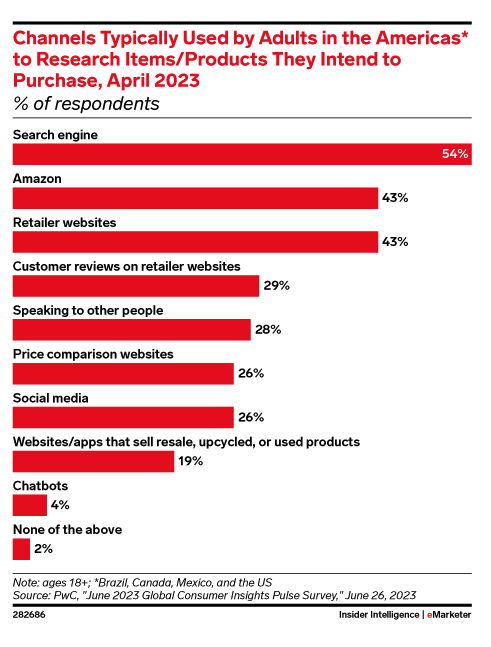
Success in omnichannel retail doesn’t come from making sales on every channel but from ensuring that each channel contributes to a consistent and interconnected brand experience. This cohesion is what makes the omnichannel approach so powerful – it’s the key to mastering the retail landscape where online and in-store experiences blend.
Customer Satisfaction and Loyalty: Offering a consistently positive experience across all channels fosters long-term customer relationships, enhancing satisfaction and loyalty.
Customer Retention: A unified brand presence across all platforms reduces the likelihood of customers switching to competitors, thereby improving customer retention.
Customer Lifetime Value: Integrating the customer journey across all touchpoints – from discovery to purchase – enables companies to maximize customer lifetime value, emphasizing the importance of a holistic brand experience.
By acknowledging the dynamic nature of shopping today, with transitions between online and in-store experiences, retailers can refine their omnichannel strategies to meet customers at every point of their journey, ensuring that whether they are browsing on a mobile device or walking into a store, they receive an experience that’s distinctively consistent and reliably connected to the brand.
The Challenges of Omnichannel Marketing Campaigns
Crafting a successful omnichannel marketing campaign requires meticulous planning and execution. Teams must develop coherent content across various channels, from email marketing to social media to in-store interactions. The content must align with the brand’s voice, maintain consistent messaging, and meet the customer expectations of each channel while still contributing to a unified customer experience.
The campaign needs to utilize data analytics effectively for collecting customer insights and understanding customer behavior. Marketing automation tools are often necessary to manage these complexities, especially when dealing with audience segments across devices and channels.
While omnichannel marketing efforts are more complex and demanding than single channel campaigns, with the right strategy and tools, they can significantly enhance the customer experience, leading to more sales and stronger customer relationships.
The use of omni channel marketing strategies is growing as businesses recognize the need to meet customers where they are, whether it’s online, via mobile device, or in a brick-and-mortar store.
The proportion of U.S. households engaged in – and projected to engage in – omnichannel shopping, spanning from 2017 to 2025.
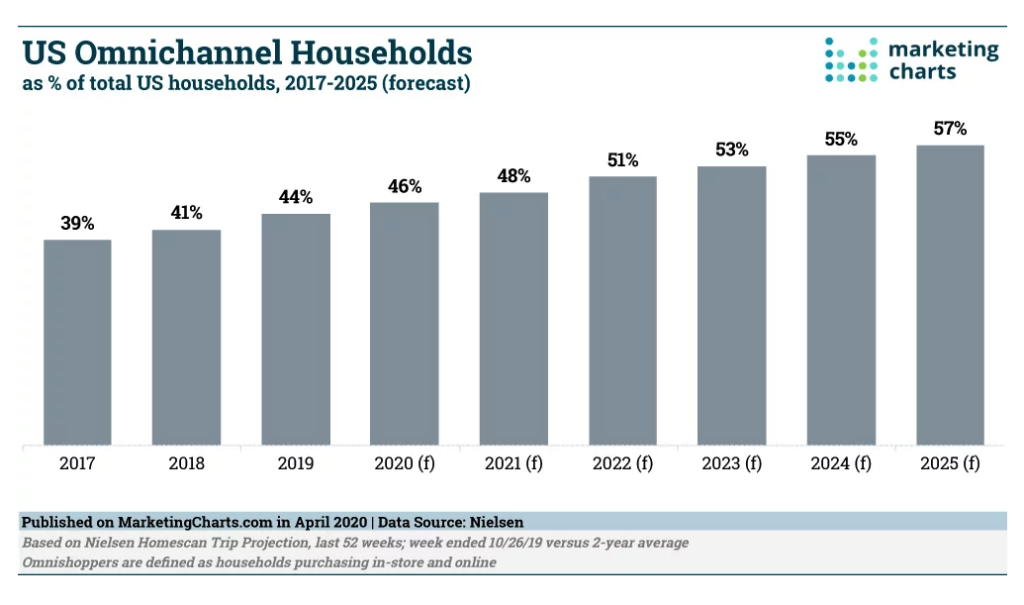
When implemented effectively, omnichannel strategies can ensure that customers engage with a consistent brand experience, regardless of the marketing funnel stage they are in or the channel customers interact with.
This strategy aligns with the insights from the Dentsu Creative survey, highlighting that not only is it crucial for every touchpoint to embody the brand’s story, but it is also essential for the customer experience to deliver on what the brand promises, maintaining consistency and trust throughout the buyer’s journey.
Adopting an omni channel marketing approach allows for more effective customer acquisition and feedback mechanisms, aligning marketing processes with the overarching goal of delivering a seamless and satisfying omnichannel experience to every customer.
Crafting an Optimal Omnichannel Marketing Strategy For the Customer Journey
Embarking on an omnichannel marketing approach necessitates meticulous preparation to ensure a seamless customer experience that spans multiple channels, both online and offline. Here are essential strategies to implement a successful omnichannel marketing plan:
Analyze Customer Interactions
As you chart the customer journey within an omnichannel framework, be mindful of where and how your target audience interacts with your brand for the first time. IDC Research indicates that B2B buyers have heightened expectations, desiring content that is not only omnichannel but also more interactive and immersive at every stage of their engagement.
Appreciate the subtleties of customer behavior across diverse platforms — from social media to physical storefronts — and design a consistent experience that not only meets their current preferences but also proactively addresses their future demands.
Segment for Personalized Engagement
Leverage customer data to segment your audience and cultivate long-term customer relationships. Personalization is key; use the insights from analytics to customize communication, whether through targeted email marketing or personalized in-store purchase recommendations, enhancing customer satisfaction and retention.
Twilio’s 2023 State of Personalization Report highlights that 62% of business leaders acknowledge improved customer retention as a direct outcome of personalized marketing efforts.
Use the Right Omnichannel Marketing Tools – Enter Mediatool
It’s essential to equip yourself with omnichannel marketing tools that enhance your marketing initiatives. Once your campaign gains momentum, incorporating automation tools is beneficial. However, it’s equally important to harness the capabilities of comprehensive marketing platforms such as Mediatool.
With Mediatool, crafting effective campaigns becomes straightforward thanks to its user-friendly interface. It also promotes team collaboration by allowing multiple users to access and manage the same customer data, vital for coordinating efforts across various channels.
Additionally, Mediatool provides the advantage of aggregating all your media data for in-depth analysis. This functionality empowers you to create more effective campaigns that truly engage your intended audience.
As your omni channel marketing strategy progresses, you’ll have the tools to continuously refine and enhance your approach by analyzing the data you collect.
Enterprises that have adopted omnichannel solutions have already documented the payoff: a 61% uptick in cohesive customer experiences, a 47% improvement in developing enduring, data-oriented strategies, and a 36% boost in customer loyalty, underscoring the tangible benefits of a well-tooled omnichannel marketing strategy.
Selecting the appropriate tools can revolutionize the way you craft and oversee your omnichannel marketing initiatives, allowing for a smoother operation free from the common hurdles previously discussed. Confirm that you have the optimal software solutions and applications before kick-starting your next campaign.
Harness Media Data for Impact
Combining customer feedback, behavior, and preferences with an integrated platform like Mediatool can transform your marketing initiatives. Consistent analysis of this complex data sharpens your omnichannel approach, leading to a brand experience that resonates across all customer interactions.
Forrester’s Omnichannel Intelligence Report underlines a common industry hurdle: most firms find it challenging to comprehend and apply consumer insights effectively across online and offline channels. With 95% of omnichannel leaders using half a dozen or more data sources to gauge omnichannel engagement, a unified analytics tool becomes even more crucial.
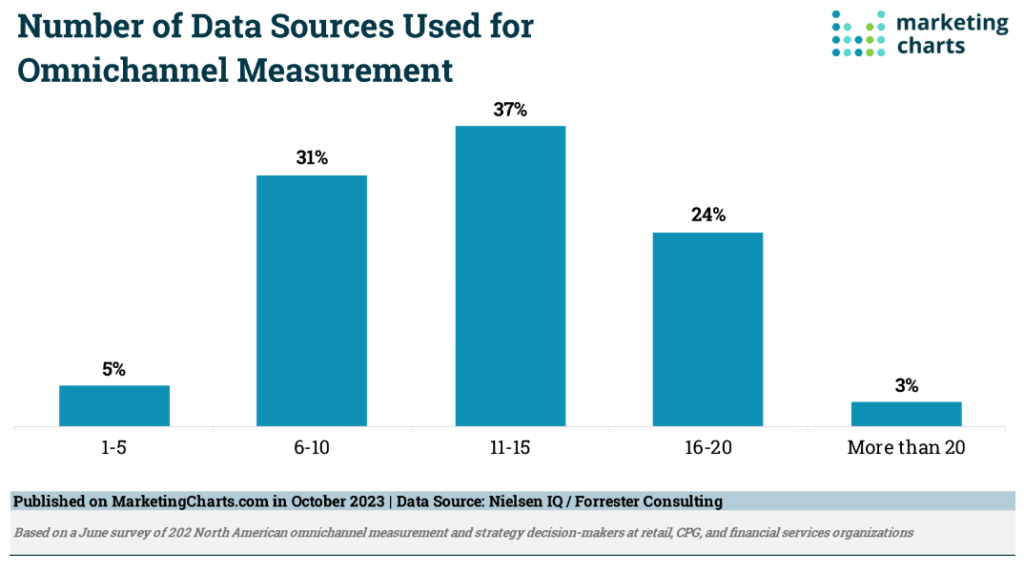
Mediatool’s ability to consolidate these varied data streams under one roof can be a game-changer, enabling a coherent strategy that meets and exceeds customer expectations.
Anticipate Evolving Customer Needs
To stay ahead, omni channel marketing strategies must evolve with the changing habits of consumers who seamlessly switch between devices and locations.
The latest McKinsey Consumer Pulse Survey underscores this shift, noting that 81% of consumers—a 6% increase from last year—now explore multiple channels, from web browsers and apps to in-store visits, to inform purchasing decisions.
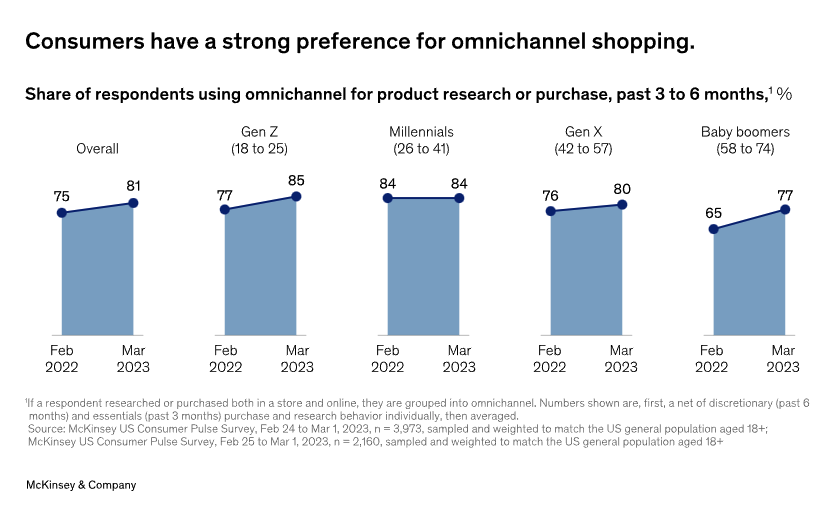
A proactive omnichannel approach places the customer’s multi-channel journey at the forefront, transforming every interaction into potential sales and deepening brand loyalty.
The Pivotal Role of Context in Omnichannel Marketing
It’s often said in the marketing sphere that context reigns supreme, and this adage holds even more accuracy within the scope of omnichannel marketing.
The goal of an omnichannel strategy is to weave together various channels to deliver a seamless customer experience, whether it’s through providing services, spotlighting products, or enhancing brand awareness.
To create a successful omnichannel marketing strategy, you need to ensure that all your materials are imbued with relevance and tailored to support a smooth and engaging customer journey.
Here are some ways to integrate context effectively into your omnichannel efforts:
- When targeting audience segments, are you leveraging browsing history and page engagement to make product suggestions?
- Is your marketing automation fine-tuned to offer products or content based on visitors’ geolocation and online behaviors?
- In your quest to boost customer lifetime value, do you effectively use data to craft offers that upsell or cross-sell, making the advantages of combined purchases clear?
- How are your omnichannel campaigns structured to address abandoned carts? Are your emails responsive and easily accessible on multiple devices, including mobile?
- Considering consumer preferences, do your marketing materials cater to the dominant devices used by your customers, be it desktops or mobiles, ensuring a unified customer experience?
Omni channel marketing not only involves multiple channels but requires meticulous attention to responsive design across all web pages. This responsiveness is key in adapting the layout and functionality to whichever device the customer prefers, from mobile devices to desktops, enriching the customer experience with your brand.
The essence of a comprehensive omnichannel marketing strategy lies in its ability to adapt and respond to the customer’s environment, guaranteeing a consistent brand experience.
When all facets of your omnichannel approach—from social media channels to brick-and-mortar stores—are integrated, your team can foster greater customer engagement, retention, and, ultimately, loyalty.
Emerging Technologies in Omnichannel Marketing
The omnichannel landscape continuously evolves, with new technologies shaping how businesses interact with consumers. Staying ahead requires understanding and integrating these advancements into your omnichannel strategy.
As these technologies advance, they not only redefine the customer experience but also offer unprecedented insights into consumer behavior, enabling businesses to refine their strategies in near-real time.
AI and Machine Learning
Artificial Intelligence (AI) and machine learning are at the forefront of personalized customer experiences. AI can analyze vast amounts of data to predict customer behavior, allowing businesses to tailor their marketing efforts.
Machine learning algorithms improve over time, enhancing recommendation engines and personalizing content delivery in real time.
Beyond personalization, AI also automates operational tasks, freeing up human talent to focus on creative and strategic initiatives.
From inventory management to customer service, AI is streamlining the backend processes that support a seamless omnichannel experience.
Augmented and Virtual Reality (AR/VR)

AR and VR technologies are transforming the retail experience, offering customers immersive ways to try before they buy. Virtual try-ons, 3D product visualizations, and interactive store experiences bridge the gap between online shopping and physical retail, providing a unique and engaging way to explore products.
The next wave of AR and VR could integrate more deeply with social media platforms, allowing users to share their virtual experiences with their networks, thus amplifying the reach of these technologies and driving social media commerce.
Internet of Things (IoT)
IoT connects physical devices to the internet, enabling a new level of service and personalization. Smart devices can now communicate with each other, allowing for a more integrated and automated customer journey, whether it’s smart fitting rooms in stores or IoT-enabled homes that facilitate automated purchases.
Looking ahead, IoT could further enhance personalization by integrating with wearable technology, providing real-time health and lifestyle data that can inform product recommendations and tailor services to individual wellness goals.
Chatbots and Voice Assistants
Chatbots and voice assistants provide customers with instant, conversational assistance. These tools can handle inquiries, guide users through the buying process, and offer personalized recommendations, ensuring seamless interactions across various touchpoints.
The future of these technologies lies in their increasing sophistication; soon, they may be able to detect customer emotions and respond empathetically, creating a more human-like interaction that could significantly enhance customer satisfaction.
Implementation Strategies
- Evaluate which emerging technologies align with your business goals and customer needs.
- Start small with pilot programs to test the effectiveness of new technologies before full-scale implementation.
- Train your team to understand and manage these technologies effectively.
It’s vital to create a roadmap for integrating new technologies that consider both short-term gains and long-term visions. A phased approach allows for agile adjustments and helps to manage budgetary commitments. Additionally, consider partnerships with tech firms as a way to leverage expertise and innovate more rapidly.
Adopting emerging technologies in your omnichannel strategy can create more engaging, efficient, and personalized customer experiences. Stay flexible and willing to adopt new tools as they develop to maintain a competitive edge.
Sustainability in Omnichannel Marketing
As consumers become more environmentally conscious, they expect brands to demonstrate sustainability in all aspects of their business, including marketing. Omnichannel marketing must adapt to meet these expectations without compromising on customer experience.
Brands need to weave sustainability into their storytelling and customer engagement in a way that is genuine and impactful. This isn’t just about being ‘green’ but also about building a brand that can thrive in a future where resource efficiency and ethical practices are paramount.
Eco-Friendly Practices
Incorporate sustainability into your packaging, shipping, and product lifecycle management. Use recycled materials, minimize packaging, and optimize logistics to reduce carbon footprints. In physical stores, implement energy-saving measures and encourage the use of reusable bags.
Beyond the product itself, consider the entire customer experience. For instance, digital receipts instead of paper, in-store recycling programs, and even partnering with carbon offset programs can further solidify a brand’s commitment to eco-friendly practices.
Digital Optimization
While digital channels are inherently more sustainable than paper-based systems, they still have an environmental impact. Optimize online content to reduce data transfer sizes, and consider green web hosting providers that use renewable energy sources.
There’s also a move towards ‘lean’ digital design that prioritizes efficiency and minimizes waste. This could mean simplifying user interfaces, reducing unnecessary animations, or even tailoring content delivery to minimize digital bloat and, consequently, energy consumption.
Product Information Transparency
Use your omnichannel platforms to educate consumers about the sustainability of products and business practices. Detailed product information can include materials used, sourcing policies, and recycling instructions.
Transparency goes hand-in-hand with accountability. By showcasing the journey of a product—from raw materials to the end user—brands can create a narrative that not only informs but also instills confidence in eco-conscious consumers who want to make responsible purchases.
Sustainable Customer Engagement
Leverage digital channels to engage with consumers on sustainability issues. Create campaigns that promote environmental awareness and encourage sustainable behaviors, such as recycling programs or supporting eco-friendly products.
Engaging customers in sustainability can extend to building online communities where ideas and practices are shared. Encouraging user-generated content that showcases customers’ sustainable actions can foster a stronger community and brand allegiance.
Adding to the importance of this approach, Semrush’s 2024 digital trends report provides compelling insights: 77% of consumers are more inclined to buy from companies that showcase social responsibility. Additionally, there’s been a remarkable 187% increase in web traffic to pages focusing on sustainability. This data underscores the growing consumer demand for brands that not only talk about sustainability but also actively incorporate it into their business model and communication strategies. Engaging with consumers on sustainability isn’t just good practice—it’s what consumers are increasingly expecting from brands.
Supply Chain Transparency

Provide visibility into the supply chain through your omnichannel platforms, demonstrating your commitment to ethical sourcing and sustainable practices.
Advanced technologies like blockchain can play a role here, allowing for a transparent, immutable record of a product’s journey that can be shared with consumers. This level of transparency can significantly enhance trust and may become a competitive differentiator.
Implementation Strategies
- Audit your current practices to identify areas for improvement in sustainability.
- Communicate your sustainability goals and achievements through your marketing channels to build consumer trust.
- Partner with third-party organizations that can certify your sustainability efforts.
Integrating sustainability into your omnichannel strategy can enhance brand loyalty and attract eco-conscious consumers. By being transparent about your efforts and continuously seeking to improve, you can not only contribute to environmental sustainability but also build a stronger, more responsible brand.
Omnichannel Marketing Examples from Leading Companies
Amazon’s Mastery of Customer Data and Online Engagement
Amazon excels in creating a personalized shopping experience through its vast online channels. By utilizing sophisticated algorithms and automation tools, Amazon collects and analyzes customer data, preferences, and past purchase history to recommend products, leading to a seamless shopping experience across its platform and mobile app.
Why It Works
Their omni channel marketing strategy extends to their engagement with customers via Alexa, which offers voice shopping and can provide customer service, thus encompassing various aspects of the omnichannel customer journey.
Starbucks and the Integration of Digital and Physical Experiences
Starbucks’ omnichannel campaigns are centered around its mobile app, which integrates with its in-store experience to provide seamless service. Customers can order ahead, pay, and earn rewards on their mobile devices, translating to quick service and personalized offers in brick-and-mortar locations.
Why It Works
Their app is a prime example of how online and offline channels can create a consistent and efficient customer journey, from mobile to physical store. With its high ranking as a preferred mobile payment platform in the United States, the Starbucks app exemplifies the successful integration of digital convenience with physical retail, proving to be a key player in the company’s strategy to enhance the customer experience.
Sephora’s Unified Beauty Shopping Experience
Sephora combines its in-store expertise with its online presence to cater to a beauty shopper’s entire journey. They utilize a variety of marketing channels, including social media, a responsive mobile app, and a dynamic website, to deliver tutorials, beauty tips, and personalized product recommendations.
Why It Works
In their physical stores, Sephora provides interactive experiences with digital screens and augmented reality, allowing customers to try products virtually and linking these experiences back to their online profile.
Nike’s Omnichannel Retail Innovation
Nike harnesses its omnichannel marketing efforts by providing a seamless user experience across social media channels, its mobile app, and the physical retail environment. Their approach includes features like reserving items online for in-store trials, customizing products in-store and online, and offering exclusive app-based features that enhance the customer relationship management process.
Why It Works
Nike’s use of various channels ensures a cohesive narrative and customer experience regardless of where the interaction begins or ends.
IKEA’s Approach to Customer-Centric Retailing
IKEA’s omnichannel strategy focuses on customer engagement through multiple touchpoints. By integrating online and offline channels, such as its website, mobile app, and physical stores, IKEA offers tools like virtual room planning and in-store digital catalogs.
Why It Works
Their marketing team emphasizes the importance of customer feedback, collected through multiple devices and platforms and used to refine the overall customer experience. This commitment to an omnichannel approach extends to their marketing campaigns, where they deliver a consistent message that resonates across all channels.
Each of these companies demonstrates an adeptness in blending online and offline experiences, ensuring that customer interactions are not siloed but rather contribute to a cohesive omnichannel experience.
Whether collecting consumer data to inform product offerings, creating an app that complements the in-store experience, or integrating feedback from various channels into their marketing strategies, these leaders underscore the importance of a diversified yet unified approach to communication channels.
Wrapping Up with a Focus on Omnichannel Excellence
Omnichannel marketing, when executed with finesse, can significantly drive customer satisfaction and guide them through the marketing funnel toward more sales and in-store purchases.
A successful omnichannel strategy doesn’t just elevate your brand—it can also lead to long-term customer relationships and increase the propensity for customer interactions both online and offline.
With Mediatool’s cutting-edge features, your team can launch and steer omnichannel campaigns that resonate with your target audience across multiple channels. By utilizing marketing automation tools, collecting customer data, and harnessing the power of email marketing, you can shape an omnichannel experience that meets customer expectations and garners more foot traffic to your physical store.
Mediatool is designed to help you navigate the complexities of omnichannel marketing, ensuring that every touchpoint—be it online channels, offline channels, or the physical store—contributes to a seamless experience.
Reach out to us to discover how Mediatool can amplify your omnichannel marketing efforts and create campaigns that deliver exceptional customer experiences every step of the buyer’s journey.
